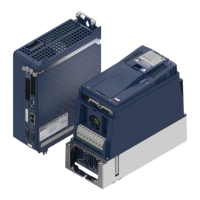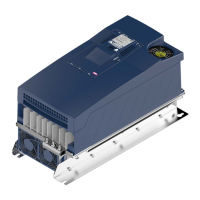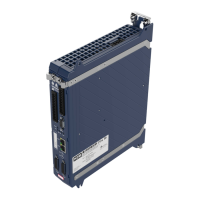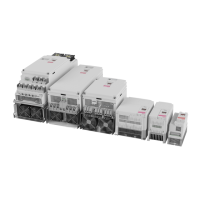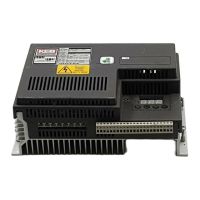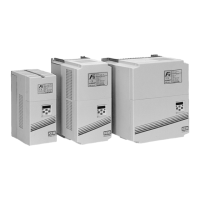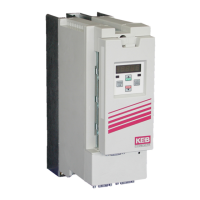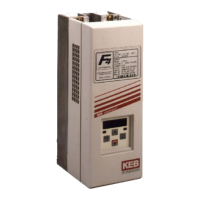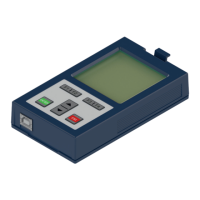
Do you have a question about the KEB F6 Series and is the answer not in the manual?
| Communication Interfaces | RS-485, Modbus RTU, CANopen |
|---|---|
| Protection | Overcurrent, overvoltage, undervoltage, short circuit |
| Operating Temperature | -10°C to +40°C |
| Humidity | Up to 95% relative humidity, non-condensing |
| Control Modes | sensorless vector control (ASCL), closed-loop vector control (encoder feedback) |
Introduction to the manual's scope and KEB's product information.
Explains safety signal words like DANGER, WARNING, CAUTION, NOTICE, and RESTRICTION.
Describes document symbols for actions, lists, cross-references, and warnings.
Mentions EC declaration of conformity and CE mark compliance.
Refers to limited warranty and terms and conditions for KEB products.
Provides information on obtaining further assistance and documentation from KEB.
Outlines usage rights and intellectual property information for KEB products.
Defines the intended audience for the manual, requiring specific electrical personnel qualifications.
States the manual describes the F6 operator and is supplementary to the power unit manual.
Details safety precautions for connecting the device electrically, including shock hazards.
Covers safety aspects of initial start-up and operation, including software and motor security.
Describes the intended use of the F6 for three-phase motor control in electrical systems.
Warns against using the product outside specified limits or for unintended purposes.
Lists available material numbers and their corresponding operator versions.
Illustrates and describes the physical components of the operator and drive controller.
Discusses operating conditions and a specific error message related to communication.
Details the RS485 interface for communication and power supply to the operator.
Explains the Ethernet and USB interfaces for diagnostic purposes.
Provides step-by-step instructions for physically attaching the F6 operator to the drive controller.
Describes the operator's control elements like Menu bar, Function bar, and navigation keys.
Explains how the operator switches on, searches for the controller, and the initial Home screen.
Lists essential files required in the operator's flash memory for correct operation.
Details how to navigate and view non-changeable parameters on the operator.
Explains how to modify parameters using the Up/Down keys and numeric input.
Describes the process of selecting parameters that have associated subindices.
Details the procedure for entering numerical values for parameters.
Provides a list and meanings of abbreviations used in the operator's function toolbar.
Explains how to access and view inverter parameters, requiring configuration files.
Introduces the operator parameters, divided into five groups for settings and diagnostics.
Details OS parameters like Operator type, Password, FTP mode, and Startup mode.
Describes Fieldbus parameters including MAC address, IP address, and network connections.
Mentions debugging parameters intended solely for internal testing purposes.
Details parameters related to the flash file system, such as used bytes, free bytes, and formatting.
Covers Customer Interface parameters for configuring GUI screens and parameter display.
Explains how to save inverter and operator parameters to flash memory.
Describes how to upload and download parameter lists and configuration files.
Details how to access and manage work lists created with COMBIVIS.
Explains how to view, delete, and manage files on the operator within the navigation menu.
Describes the FTP mode for transferring files to/from the operator via the KebFTP protocol.
Explains how to perform a function test on the operator's keyboard and display.
Describes the initial Home screen and diagnostic screens of the operator.
Explains the fault log screen that displays up to five inverter faults with timestamps and error codes.
Describes how to access and change the operator's display language.
Explains how to access the program menu to view and edit inverter parameters.
Details how to change the inverter password and its effect on available options.
Describes the setup screen for editing settings like language, font size, and scrolling speed.
Lists options available in the File Menu screen, dependent on password level.
Explains file management within the operator's GUI, including viewing and deleting files through screen menus.
Describes the FTP mode screen for connecting the operator to a computer for file transfer.
Displays file usage and options for formatting the operator's flash memory.
Explains how to write or copy parameter values between the operator and drive control.
Covers options for generating or manually applying default configuration files for the operator display.
Guides the user on how to select and display new parameters on the operator's GUI.
Illustrates the sequential flow of operator screens when navigating the GUI.
Provides version information and release dates for the manual.
Section for miscellaneous notes or comments not covered elsewhere.
